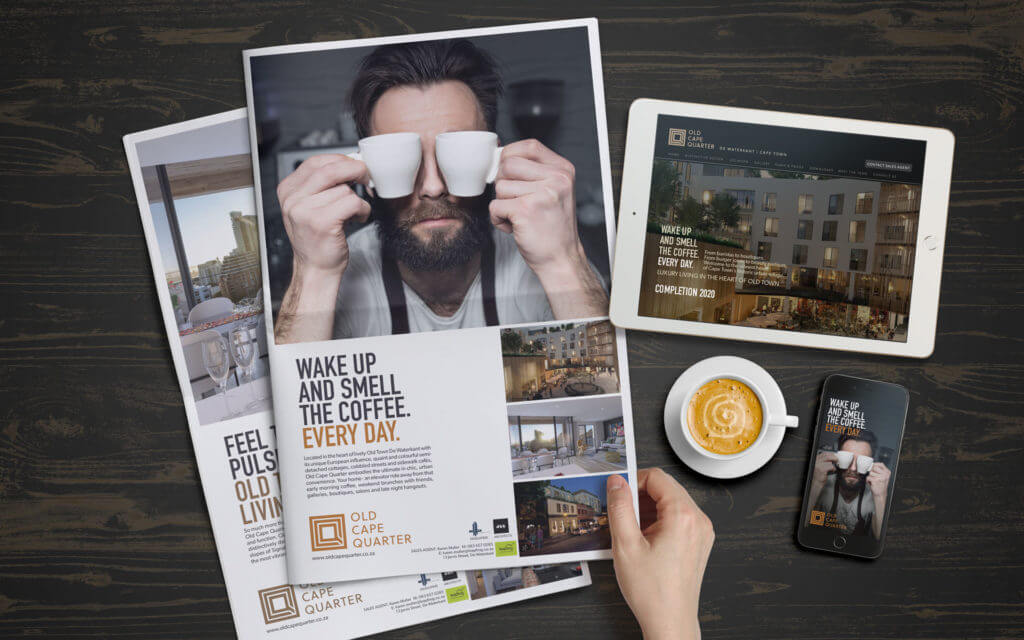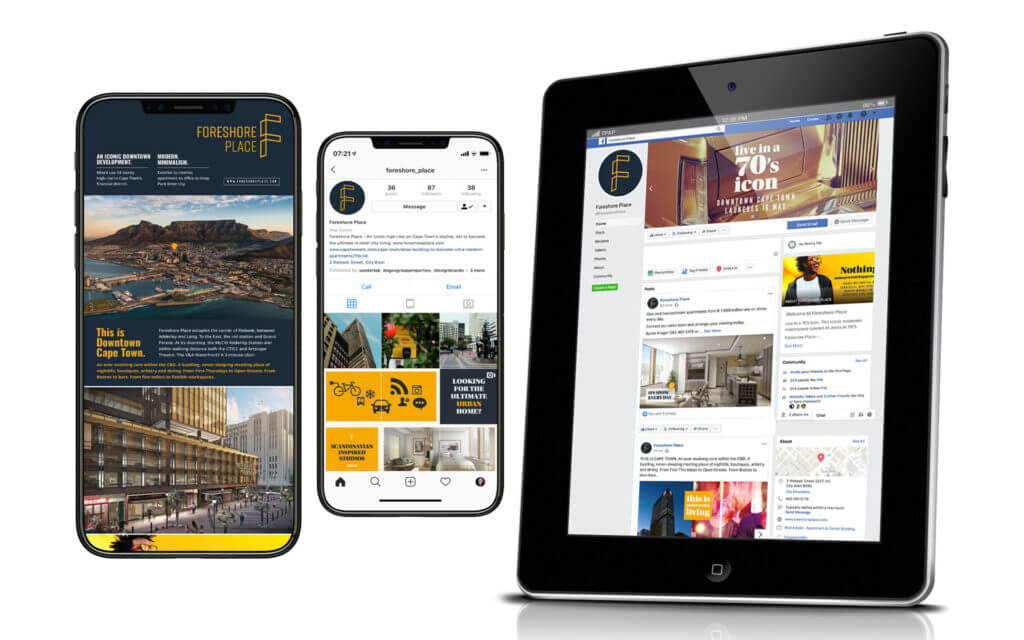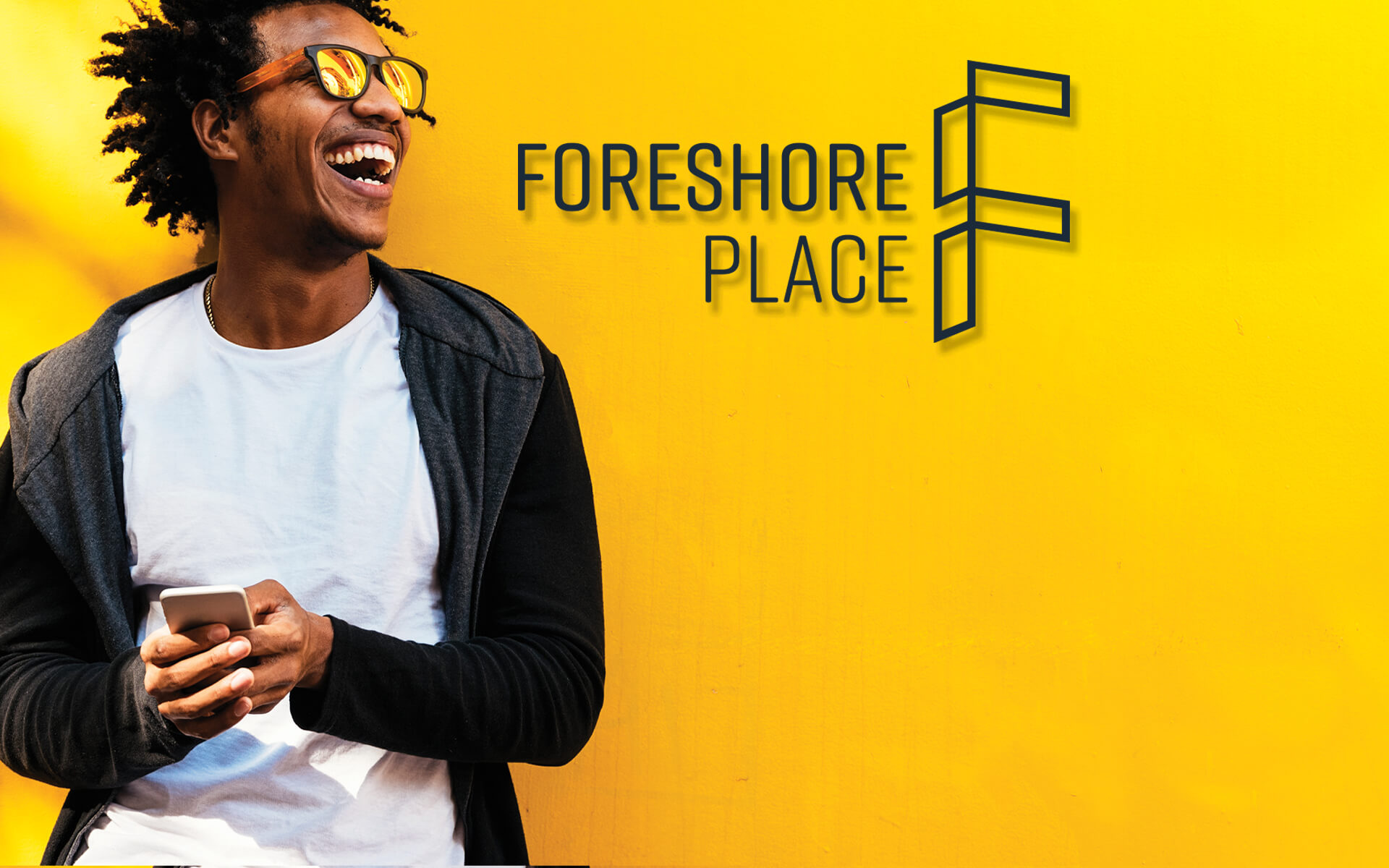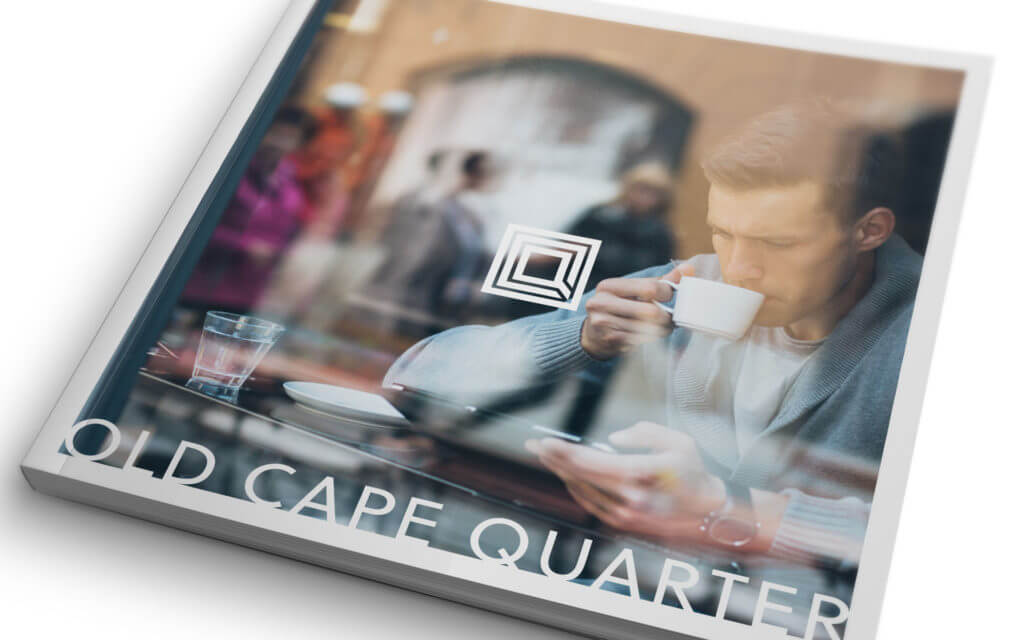Introduction
The challenge of property branding in today’s digital world is to create a powerful sense of place, to achieve a compelling emotional connection with the public by imparting an engaging vision of the vibrant community that will one day exist where there is now just a vacant lot or a building site – a community that shares the values and lifestyle of the consumer.
In this post we will present the important elements of branding, with each element being discussed in some detail, using examples where needed.
Property branding today
There are four important elements in property branding:
- Brand positioning
- Brand story
- Brand identity
- Marketing/Sales collateral (Digital & Print)
Brand positioning
Here are five ways in which to achieve effective positioning:
- Specialise in a single product. You can stand out from the crowd by focusing on a specific challenge and becoming an expert in that field – by delivering a better product than the competition.
- Provide a full suite of products. This strategy is the exact opposite of the above. In an industry that is fragmented with specialists, the brand that offers a full suite of products holds greater appeal to consumers, who can now have all their needs tended to under one “roof.”
- Be a renegade. In many industries it is becoming increasingly difficult to offer a product that differs markedly from that of the competition. In such a case you can still stand out from the competition by presenting a unique company story that differentiates you from the competitors in the minds of the public.
- Prioritise user-friendliness. Digital technology is transforming industry after industry, and those companies that exploit this to provide a much more convenient and persuasive consumer experience are leaving the rest behind.
- Find a new demographic. Look carefully for changes in the business climate, especially those that might be overlooked by companies in well-established industries, which tend to focus on the same customer demographic for years. Discovering a new customer demographic can be the key to your success.
Brand story
Brand storytelling is “using a narrative to connect your offering to consumers, with a focus on linking what you stand for to the values you share with your target market. . . It’s the driving force behind your business, and it differentiates you from the competition. It’s why you exist.” (Kaitlin Loyal).
Thus, for example, Nike stands for athletic excellence, Disney for family happiness, Coca Cola for sharing happiness (Charmaine du Plessis). Brand storytelling is touted as the future of marketing for the following reason: as our world becomes more digitally driven, automated and fast-paced, our sense of alienation and concomitant desire for the human touch becomes stronger. A sense of humanity is therefore becoming the new premium. Property branding is no exception.

To survive in this new digital environment, businesses need to connect with audiences on a more personal level. They need to humanize their interaction by appealing to the emotions, the senses and the imagination of the audience. Brand storytelling is an ideal fit. People engage with a narrative more deeply than they do with mere facts or promises (Celine da Costa).
Brand identity
Brand identity or corporate identity is “the collection of all elements that a company creates to portray the right image to its consumer.” (Deanna de Bara). A well-constructed identity has many benefits, some of which need to be elaborated in some detail here:
Benefits
- A strong brand identity provides a source of distinctiveness – it is needed these days to ensure your company stands out from the crowd of competing companies that offer roughly the same products or services.
- A strong brand identity offers a point of credibility and builds trust. This is a particularly important point: according to Nielsen’s Global Trust in Advertising Report of September 2015, 83% percent of consumers around the world say they trust earned media, such as word-of-mouth and recommendations from friends and family, above all other forms of advertising.
Branded websites come in second at 70%, while consumer opinions posted online and editorial content, such as newspaper articles, share third place at 66% each (Nielsen.com).
Gaining the trust of consumers is a vital part of brand development. According to Adam Howatson ‘Consumers are increasingly putting business ethics at the top of their list of considerations when spending their money. There’s a good reason for this – there has been a collapse in consumer trust that started at the turn of the millennium and seems to be continuing on a downward spiral.’ Reasons for this vary from ‘the politics of personality, to the rise of fake news and the labelling of real news as fake; the actions of the few in the lead-up to the 2007 financial crisis, and the political response, and dishonest behaviour of trusted companies.’ (bizcommunity).
This is supported by the Edelman Trust Barometer of 2017, which shows trust in governments, NGOs, business and media to be at unprecedented lows. However, the 2019 report shows a modest rise in trust in all four sectors. Gaining consumer trust is therefore a special challenge in the digital age – since it is digital media that is to a significant extent, responsible for the global collapse of public trust. ‘Today, for customers to identify with brands and make an emotional connection with them, they have to trust their products and their ethics. Customers have to believe in the brand.’ (Howatson).
- A strong brand identity enables self-expression. Brands can also aid the construction and expression of personal identity. People who buy an apartment in a branded residence see the brand as an extension of the personal identity that they project to the world, and that often plays a key role in their social and professional success.
- A strong identity serves as a unifying factor. ‘In the digital realm, a strong brand identity has the power to build (and maintain) group identity through the creation of so-called “brand communities” whose members identify with specific brands and what they stand for. This is especially true for brands that enjoy a “cult-like” following among consumers such as Apple.’ (Mike dos Santos) This is also true for branded residences where the community of residents have a common interest in identifying with the brand and promoting its status in the wider community.
Marketing/Sales collateral (Website, Facebook, Instagram, Brochures etc)

Your website and various digital platforms like Facebook and Instagram are of critical importance in projecting your brand identity while promoting your product. To attract new customers and connect strongly with them there must be a consistent brand message that builds loyalty and trust.

The latter equally applies to your use of signage and sales collateral. Signage and customised print collateral that are designed to this end are powerful signifiers of a well-rounded corporate identity, which shows clients that you are a legitimate business and that they are in good hands.
The benefits of well branded digital communication
According to David Aaker, a branding guru, digital communication –
- engages and leverages ‘word-of-mouth’
- is an excellent vehicle for rich and deep content
- is perceived as being more trustworthy
- allows laser targeting or ‘flex’ targeting, a technique that enables you to target your audience with unprecedented precision
(Aaker, David A. 2015. Aaker on Branding: 20 Principles that Drive Success. SAGE Publications).
Aaker’s point about word-of-mouth demands special consideration, since, as we have seen above, earned media, such as word-of-mouth and recommendations from friends and family, are trusted above all other forms of advertising.
Closing
We have arrived in the digital-driven, automated future, where our instinctive need to connect emotively with other humans is suppressed more and more. In this scenario property branding in today’s digital world that engages our humanity, emotions and imagination through strong brand identity, storytelling and brand positioning – to which the website, sales & marketing collateral and digital platforms are well-aligned – will become increasingly powerful. Companies that have no brand identity will struggle to be seen amidst the multitude of competing businesses offering the same products and services.
You can view one of ThinkLab’s ThinkBrand featured projects here.
Read more about the ThinkBrand property branding services here.






